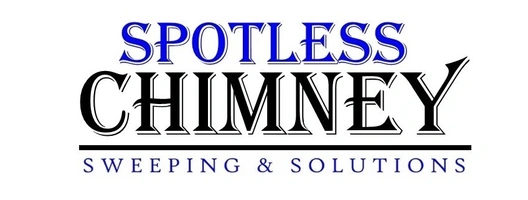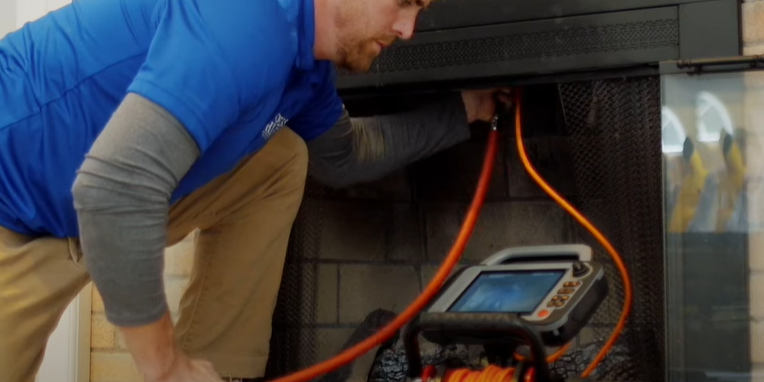What to Expect During a Professional Chimney Inspection (And Why It Matters)
Whether you are buying a new home or want to ensure the safe and efficient operation of your existing wood stove or fireplace installation, it may be time to schedule a chimney inspection. Understanding what to expect during a professional chimney inspection can help you search for professional chimney inspections near you. Below, find out more about what a chimney inspection entails and why it matters.
5 Expectations of Professional Chimney Inspections and Their Importance
The Chimney Safety Institute of America confirms that chimney inspections are available at Levels 1, 2 and 3. Consequently, your search for and expectations of chimney inspections near you may be further informed by your desired inspection level. Notably, Level 3 inspections generally only occur when a serious problem is suspected (often revealed by another level of inspection) because they are the most invasive. For any level of chimney inspection, here are five of the basic expectations of this chimney service and the importance of each one:
- An examination of the chimney structure on the outside of the home: The visual inspection of the chimney’s exterior looks for damage to chimney caps or other components, crumbling mortar and more potential issues. However, some parts of the chimney system may be difficult to see. Therefore, only the more thorough Level 2 inspections, as provided at Spotless Chimney, may fully assess harder-to-access system features.
Inspecting the chimney exterior is important for both ensuring the chimney’s structural integrity and spotting wear and tear or damage that may compromise the chimney system’s internal components. For example, even seemingly tiny cracks due to corroded chimney caps or flashing can allow water to penetrate the chimney. Unfortunately, chimney leaks have the potential to impact many parts of the chimney, which may eventually necessitate a chimney repair or even a rebuild.
- A close look inside of the chimney system: Expect visible parts of the flue and chimney liner, as well as the smoke chamber and damper, to be inspected. In addition to general signs of wear and tear, cracks, ventilation obstructions and creosote buildup are often given particular attention. Unlike Level 1 inspections, Level 2 inspections include video scanning of internal chimney features, not just the portion of the chimney interior that is accessible to the eye. Accordingly, this inspection level is better able to confirm whether or not a chimney is suitable for use.
A fireplace can be the reason a room becomes the central gathering place in the home or why prospective buyers are interested in a specific house. However, without proper care, a chimney system can pose potential dangers. For example, when wood is burned, creosote is the natural byproduct. Unfortunately, if it is left to accumulate over time, it can increase the risk of fire. Consequently, understanding what to expect during an inspection is a matter of safety as well as chimney system efficiency.
- The inspection of the fireplace or stove components and visible chimney structure inside the home: Checkpoints for this area include any connections, firebox components, grates, and brick and mortar or other materials of the inside-facing chimney installation. In addition to these parts, Level 2 inspections address additional interior locations, such as attics or crawl spaces for issues such as water leaks.
As with the chimney portion on the exterior of the home, the condition of the chimney components inside of the home are a matter of appearance as well as functionality and safety. For example, spotting rust on metal fireplace components or finding leaks in the attic evaluation may point to water damage. Once issues are discovered through inspections, repairs or other solutions can be determined and executed before becoming more significant (and often expensive) problems.
- Professionalism: A chimney inspection is important for the safety of your household and the performance of your chimney system. From having the necessary safety equipment and appropriate tools to providing courteous service and clear communication, service providers should demonstrate their expertise through their presentation and customer care, as well as the nuances of the specific chimney service. For example, if you are supposed to have a Level 2 inspection, then the technician must have the necessary video equipment. Although there isn’t a regulated license for chimney inspection technicians, evidence of expertise, such as the training protocols of a company and its available certifications from organizations like the National Chimney Sweep Guild may be available.
- Documentation and Transparency: In addition to helping homeowners avoid chimney scams, contracts and chimney inspection findings should be transparent and detailed, so that homeowners understand the state and needs of their chimney system and associated services. For example, with each Level 2 inspection from Spotless Chimney, our team provides a full digital inspection report. Documentation about chimney inspections and ongoing chimney maintenance matters for several reasons:
- Inspection reports illuminate the chimney system condition for homeowners.
- These reports help clarify recommendations that chimney professionals may make with regard to any safety concerns, cleaning needs or proposed repairs.
- For buyers looking at homes with a fireplace, a chimney inspection and its results provide vital information that may influence overall property value, be relevant in pricing negotiations and impact final decisions about putting forth or following through with offers.
- These reports also confirm compliance with current building codes and other safety specifications.
For a chimney system checklist to use for your own monitoring purposes or to help anticipate inspection tasks, this chimney inspection checklist from Angi may be helpful. At Spotless Chimney, we offer a range of chimney services, including Level 2 chimney inspections. With the report of inspections in hand following our professional evaluation, we encourage homeowners to ask any questions that they may have in order to understand the condition of their chimney system and next steps in chimney care. For a chimney inspection, chimney cleaning and more, contact our experienced chimney professionals today!








